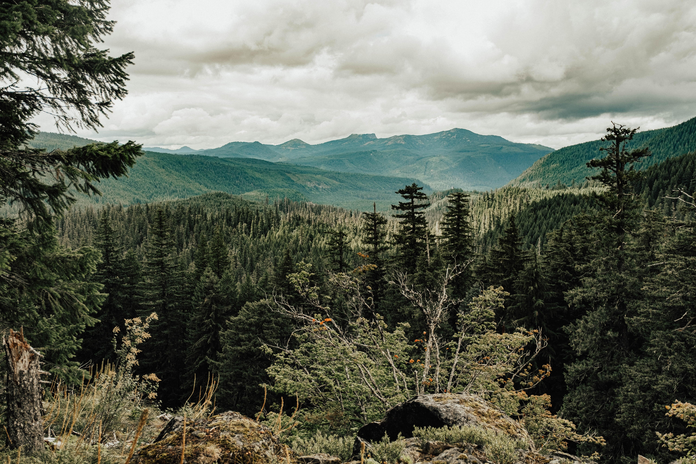Crowds poured into the polls on Tuesday, November 2nd all over the state of Maine. Many were there to defend the conservation of Maine’s untouched wilderness, which has been in turmoil, in regards to the New England Clean Energy Connect (NECEC). For all who are unaware of the NECEC, it’s a project that has been in progress to bring hydroelectric power from Hydro-Quebec, Quebec, Canada to New England, with Massachusetts getting the bulk of the benefits and clean energy. The NECEC is expected to bring in $258 million within the next 40 years, as well as perpetuate the use of renewable energy and expand the job market in Maine. So what is the problem, you ask? There are both environmental and economic advantages? Well, there is a remarkable amount of controversy surrounding the location of the proposed power corridor. The NECEC, despite its multimillion dollar effort to endorse the corridor by greenwashing hydropower, is destructing the Maine wilderness and setting precedent for more power corridors to be constructed in the future.
Central Maine Power (CMP) is the company endorsing the construction of the corridor for the NECEC project. CMP proposes that the corridor will be a total of 145 miles long spanning through northern and central Maine. Specifically 92 miles of this will be using preexisting corridors, some of which will need to be expanded in width. The rest of the 53 miles is where the biggest controversy arises. At 53 miles long and 150 feet wide, nearly 1000 acres of untouched wilderness is proposed to be clear cut. The disaster this will have on the ecosystems is remarkable and everlasting. According to the Natural Resource Council of Maine (NRCM), that 53 mile stretch crosses 263 wetland habitats, 115 streams, 12 inland waterfowl and wading bird habitats, and two protected scenic areas. The two protected scenic areas affected are the Kennebec River Gorge and the Appalachian Trail.
Not only will these areas be cleared, ruining that environment directly, but this will cause fragmentation to the landscape. Fragmentation happens when roads, corridors, or any physical obstruction is introduced to an ecosystem. In an ecosystem, there are interior and edge species that reside in the respective habitats. Examples of edge species which reside on the edges of habitat close to humanity include squirrels, raccoons, deer, and chipmunks, basically the species you might see in the backyards of Maine. Interior species on the other hand are more vulnerable and live in areas further from civilization for security, such as moose, bears and many threatened animals. When fragmentation occurs, in this case from the development of the corridor, the edge species area increases and displaces entire populations of interior forest species. It’s said that if fragmentation occurs on 1% of the landscape, it affects up to 18% of the surrounding area. Fragmentation changes the forest’s characteristics, as more light is entering, so different plants can grow. The temperature, hydrology and wind speed changes are also apparent in results. With fragmentation, open habitat predators suddenly have access.
These areas are not only home to animals and plants, but are also areas that people recreate in. Maine thrives off of its untouched wilderness as a novelty to bring about tourism and recreation. The Kennebec River is home to some of the most sought after white water rafting, canoeing, and kayaking in the state, which draws in many people from many different locations. The proposed corridor also cuts by the Appalachian Trail, used by thousands of people such as thru-hikers who have spent months to get to Maine. The area that will be cut is home to many hiking, biking and snowmobiling trails. It’s also the grounds for many Maine hunters. An electricity power line will completely ruin this area that is so sought after by tourists and Mainers themselves.
Hydroelectric dams are not as “green” as you might be led to believe. The United States Geological Survey released an article on how the United States generates electricity from water stating, “A power source is used to turn a propeller-like piece called a turbine, which then turns a metal shaft in an electric generator, which is the motor that produces electricity.” In the case of hydroelectric power in dams, water is held back by the dam itself in a reservoir, and water is taken in when the dam is lifted and enters the penstock. Rushing through the penstock with all the pressure from the reservoir and gravity, the water rotates a turbine which is where the energy is harnessed and sent to a generator. Although this source is good for limiting greenhouse gas emissions, the reservoir and rotary blades create a new ecological issue for the surrounding wildlife and ecosystems.
This decreases the water level on the output side of the dam, and increases water level on the input side of the dam. These water level changes affect the ecosystem and biodiversity dramatically. When the reservoir levels rise, they submerge everything in their path including all the local plants. Inevitably, these plants die and decompose due to the lack of oxygen, which leads to the release of methane into the atmosphere. Methane is the second most prominent greenhouse gas and is more potent than its preceding carbon dioxide. Greenhouse gas emissions are responsible for a thinning ozone layer and warming climate.
Dams also disrupt fish passage. Many species such as sturgeon, salmon, elvers and other migratory fish rely on traveling upstream to mate and lay eggs. Dams create a roadblock for this process (WWF). The World Wildlife Foundation shares that, “Sturgeon also rely on temperature triggers and shallow areas for reproduction. Because dams change how rivers flow, the water temperature and natural conditions also change.” This shows how the effects of damming a river can indirectly affect sturgeon breeding. Not only is upstream breeding impacted by the erection of dams, but also the downstream migration of fish to the sea.
How are fish supposed to get through dams when traveling downstream? There are very limited ways for fish to make it downstream past a dam. Many end up passing through the penstock and go through the rotary blades, this often results in death. But fish ladders have been constructed on dams to allow some passage of fish through the dams, which is a step in the right direction. The conflict is brought to light as to whether this environmentally-friendly energy source is worth the ecological detriment. In recent years, there have been many limitations within hydroelectric dams as a result of the “Endangered Species Act of 1973.” These restrictions have resulted in the removal of dams around the nation.
At the base of many of the Hydro-Quebec dams lie some of the indigenous communities of Quebec. The Bangor Daily News released an article interviewing Lucien Wabanonik, the Lac Simon Anishinabe Nation counselor. He spoke up to represent the Kitcisakik Tribe which resides at the base of a Hydro-Quebec dam. Wabanonik shares, “While the non-Indigenous majority profits off of HQ’s illegitimate dealings, our people suffer, without well-being indicators now comparable to those of third world countries. We are forced to live in deplorable conditions of poverty, and our suicide rate is five to seven times higher than the rest of Quebec. The Kitcisakik Tribe is situated at the foot of one of HQ’s dams, yet they have no access to electricity, running water or wastewater management infrastructure.” This just goes to show how hydroelectric dams are perpetuating environmental racism against the Indigenous Nations of Quebec.
These are some of the many pertinent issues regarding the construction of the NECEC corridor. Yes, CMP customers would receive $2.72 per month off of their electricity bill amounting to a whopping $32.64 annually. Yes, this project creates jobs, approximately 1,600 jobs are guaranteed. But is the environmental degradation, the disruption of habitats and recreation, the encouragement of environmental racism, and the destruction of Maine’s beautiful wilderness really worth it? Mainers should protect their state above all costs – the untouched wilderness of the north makes our state home.
Those voters who turned out for this November’s referendum election used their democratic voice and voted “Yes on 1” to stop the building of the corridor. The results showed 59% of votes went towards stopping CMP and the NECEC, that’s what Mainers chose, that’s what is legally just. So why did Thorn Dickinson, the President and CEO of CMP wake up the next morning and decide to proceed with the clearing of the corridor? It’s a true insult to the state of Maine and a bash to those who have worked to conserve their state and have fairly won the battle. Not to mention that the section of the corridor being worked on Wednesday was arguably the most controversial section, between the Forks and the Canadian border. Not only have they proceeded to build and clear despite Maine disapproval, Avangrid Inc, the company responsible for the NECEC, filed a lawsuit on Wednesday challenging the citizens’ initiative, claiming that it was “unlawful.” Technically the legislation from the referendum election will take effect in a month, so there is nothing that can be done to stop this legally. That being said, this is a slap in the face to Mainers and a true humiliation to American democracy. CMP, Avangrid, and Hydro-Quebec are money driven corporations with no respect for the people of Maine, and have continued to dishonor the State.
Remember; Dirigo. This motto of Maine stands for: ambition, independence, strength, reliability, determination and professionalism. Let these standards fuel your fight to conserve the beauty and reputation of Maine, of our home.


